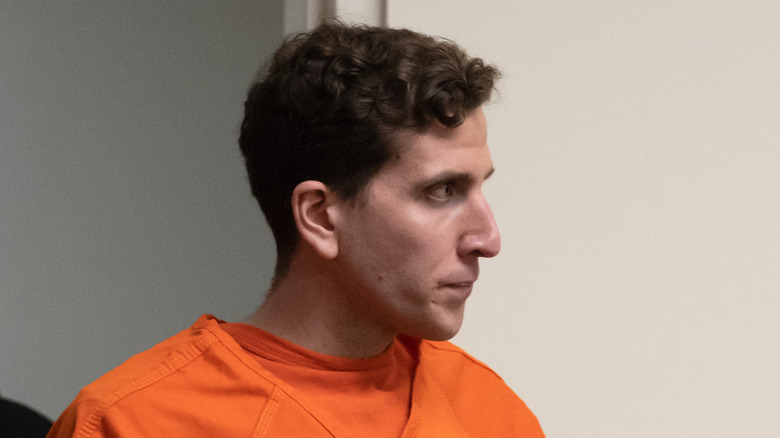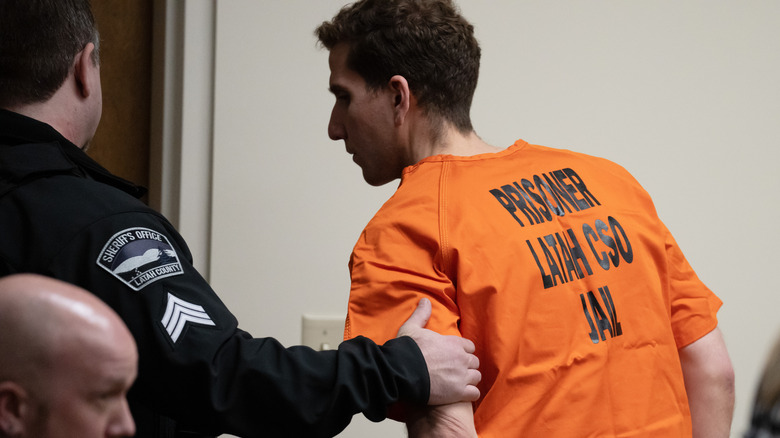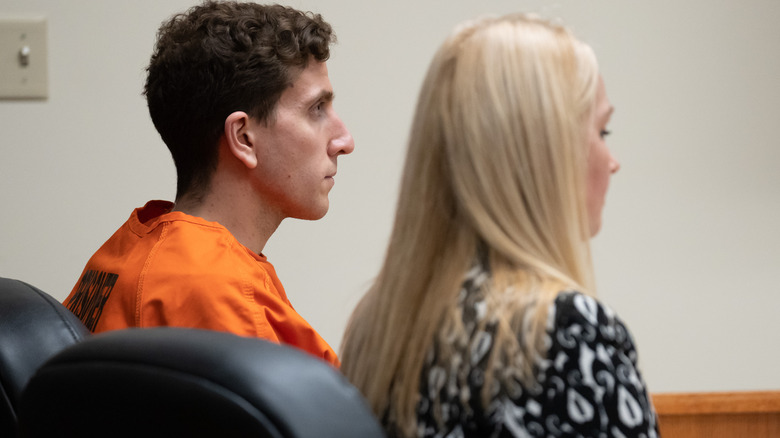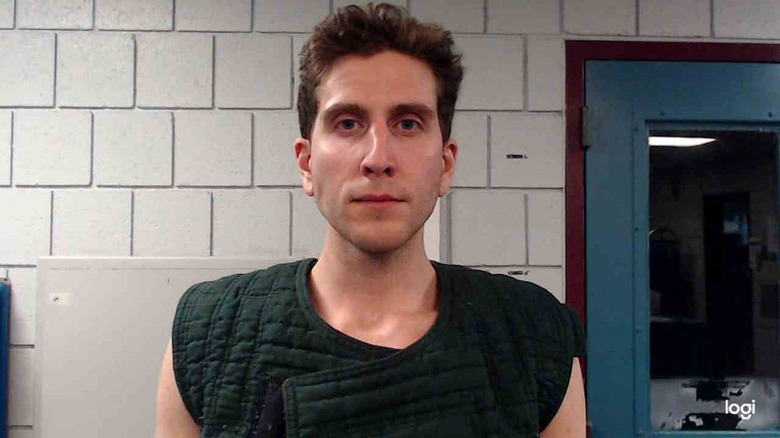Five Disturbing Affidavit Revelations Against Idaho Murders Suspect Bryan Kohberger
New details have emerged about Bryan Kohberger, the prime suspect in the University of Idaho Killings that occurred in November 2022.
On November 13, 2022, Moscow, Idaho, a small town that had not seen a murder case in nearly a decade, per The New York Times, was shaken after four students at the University of Idaho were killed at a house located near the campus. The victims were 21-year-old Madison Mogen, 21-year-old Kaylee Goncalves, 20-year-old Xana Kernodle, and 20-year-old Ethan Chapin, all of whom spent a night out before returning home in the wee hours of the morning. At the time, authorities faced a dead end as to who the killer was, and it wasn't until December 30, 2022, that Kohberger — a 28-year-old PhD student reportedly studying criminal justice — was finally arrested. According to USA Today, he was found in Pennsylvania and immediately slapped with four counts of first-degree murder and one count of felony burglary for breaking into the victims' residence.
"We have an individual in custody who committed these horrible crimes," Moscow Police Chief James Fry said at a press conference. "We do believe justice will be found through the criminal process." Now, after Kohberger's first court appearance, a shocking affidavit detailed how the suspect was released.
A knife sheath found at the crime scene led to Bryan Kohberger's arrest
It was Bryan Kohberger's very own DNA that eventually led to his arrest, according to the probable cause affidavit. Per a review by The Independent, Kohberger's DNA was on a knife sheath found in one of the rooms where the victims' bodies were discovered. Moscow Police Officer Brett Payne, who wrote the affidavit, detailed what it looked like and how their investigation pointed to Kohberger being the primary suspect.
"The sheath was later processed and had 'Ka-Bar,' 'USMC' and the United States Marine Corps eagle globe and anchor insignia stamped on the outside of it," Payne wrote. "The Idaho state lab later located a single source of male DNA (suspect Profile) left on the button snap of the knife sheath."
The New York Times also noted that investigators cross-referenced the DNA to samples collected from the trash at Kohberger's family's residence in Pennsylvania. "At least 99.9998% of the male population would be expected to be excluded from the possibility of being the suspect's biological father," the document read (via CBS News).
Bryan Kohberger's phone records suggest sinister history
As pointed out by The Los Angeles Times, Byran Kohberger's cell phone was discovered to be within the vicinity of the victims' home multiple times before the night of the killings. While the exact dates were not revealed, the investigators found that Kohberger turned his phone off around the time of the attack, likely in an attempt to minimize his connection to the murder.
Upon further investigation, authorities found that Kohberger left his home in Pullman, Washington, a few hours before the killings, based on his phone pings. Per NBC News, the phone was found to be back online after the deaths, and after 9 AM following the murder, he was once again tracked driving from Pullman to an area near the crime scene. In the times Kohberger was believed to be near the victims' home, "all of these occasions, except for one, occurred in the late evening and early morning hours," the affidavit read (via KREM News).
One of the surviving roommates saw Bryan Kohberger on the night of the murders
It's important to note that on the night of the killings, two other roommates of the victims and a dog were unharmed. One of them, referred to as "D.M." in the affidavit, admitted to seeing Bryan Kohberger the very same night.
D.M. told the authorities she already had suspicions that a stranger invaded their home after she heard one of the victims say something akin to "there's someone here," per The Independent. Moments later, she thought she heard crying from one of the rooms and a man saying, "It's okay, I'm going to help you."
Upon peering outside her room, she witnessed "a figure clad in black clothing and a mask that covered the person's mouth and nose walking towards her." D.M. confessed she was rendered speechless and left in a "frozen shock phase." It's unclear whether Kohberger also saw her, but she said he walked past and exited the home. D.M. then locked herself inside her room for the rest of the night.
One of the victims was likely awake before the attack
Perhaps the most disturbing revelation from the affidavit is that at least one of the victims was likely awake at the time of the attacks. According to reports, Xana Kernodle placed a Doordash order sometime in the early morning hours on November 13. Kernodle received the order at roughly 4 a.m. After retrieving the order, she then spent a few minutes scrolling TikTok. As her phone indicated, she was active at 4:12 that morning, per New York Post. We now know, according to the affidavit, that the murders likely took place between 4 a.m. and 4:25 a.m.
The theory that at least Kernodle, if not more victims, were awake during the attack is further given credibility by the fact that surviving roommate D.M. claimed they heard one of the victims speak out that "someone's here" around 4:15 am, though there is a forensic possibility it could have just been dialogue coming from a TikTok Kernodle was watching at the time, per The Daily Mail.
Bryan Kohberger was interested in a career in law enforcement
Despite being the prime suspect in the University of Idaho killings, Bryan Kohberger apparently wanted to have a career in law enforcement, as evidenced by his application for a police internship in Pullman, Washington. "Pursuant to records provided by a member of the interview panel for Pullman Police Department, we learned that Kohberger's past education included undergraduate degrees in psychology and cloud-based forensics," the affidavit read (via CNN).
In his application, he wrote that he "had interest in assisting rural law enforcement agencies with how to better collect and analyze technological data in public safety operations." Additionally, per NBC News, authorities also found that Kohberger posted a survey on Reddit asking participants to "provide information to 'understand how emotions and psychological traits influence decision making when committing a crime.'" Prior to pursuing his PhD, he already had experience working as a part-time security officer, per The Independent. He is also a master's degree holder in criminal justice from DeSales University.






